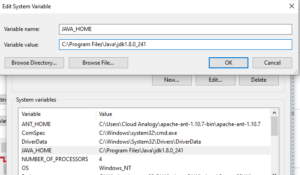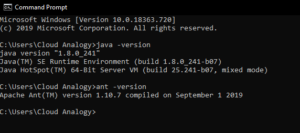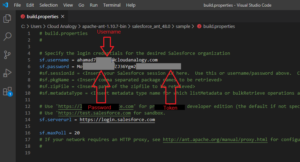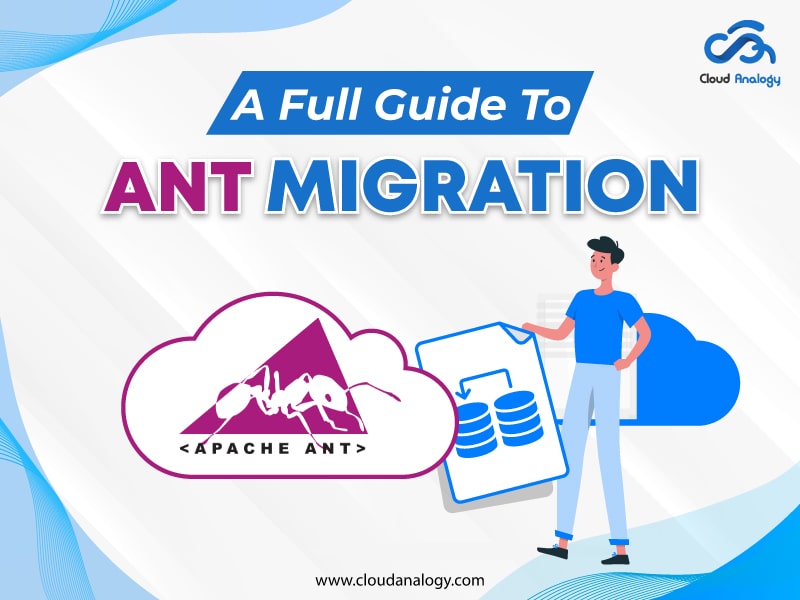Sharing is caring!
The ANT Migration tool is a command line utility for retrieving, deploying, or deleting metadata from a Salesforce Org. This tool is Java/Ant-based that uses the Metadata API provided by Salesforce. All of us are already aware that in the Salesforce environment if we want to deploy or delete anything from one org to another, we need deployment tools. But there are only a few options. In this scenario, we can either go for a changeset or use ANT migration for Metadata deployment.
Ant is a tool that is powerful, free, and suitable for automated deployments, which occur frequently. However, Ant requires a skill set that is developer-oriented and with experience in Ant and scripting tools. On the other hand, Changesets are slow but offer the easiest way for Salesforce deployment. It is possible to add components with Changesets, but you cannot delete components. It does not allow you to drive changes between two production org or Developer Editions. Changesets allow you to move metadata only between the production org and its sandboxes.
This blog post will provide insights into how the Ant Migration tool works, how to configure it, and whether there is a better way than Ant.
First, Let’s see how it works.
How Does It Work?
Ant is a tool that helps users deploy metadata changes from one environment to another by creating code packages by hand. Packages are built by the developer and organized into a single folder, which is then deployed using the tool.
Along with the actual metadata to deploy, the concept of a package file is used by Ant, which acts as an index in the deployment. Once the deployment is completed, the target org will sync with the changes (included in the deployment package).
Next, we come to how to configure the Ant Migration tool.
How to Configure Ant Migration Tool?
Step 1:- Download the Ant Migration Tool and extract the zip file into your local drive.
Step 2:- Download the Salesforce Ant and extract the zip file into your local drive.
Set the Environment Path Variable.

Step 3:- Cross-check the Java version and ant version.

Step 4:- Edit install/build.properties for inserting your Salesforce username and password. As you use the API to access Salesforce, remember to append your Security Token to your password.
Path :-> \salesforce_ant_48.0\sample.

Note:–> Username will be your Salesforce username, and password will be your Password+Security noToken(Salesforce Security Token).

Step 5:- Open your command line to the install folder, then retrieve code using Ant:
$ ant retrieveCode.

Following is a list of all commands to be used with Ant:
| Command | Description |
| ant bulkRetrieve | It retrieves all the items of a particular metadata type |
| ant retrieveUnpackaged | It retrieves an unpackaged set of metadata from your org |
| ant retrievePkg | It retrieves metadata for all the packages specified under packageNames |
| ant deployUnpackaged | It deploys the unpackaged metadata retrieved with retrieveUnpackaged and runs tests in this organization’s namespace only. |
| ant deployZip | It deploys a zip of metadata files to the org |
| ant deployCode | It uploads the contents of the “codepkg” directory, running the tests for just one class. |
| ant deployCodeNoTestLevelSpecified | It shows deploying code with no TestLevel specified |
| ant deployCodeRunLocalTests | It shows deploying code and running tests only within the org namespace |
| ant undeployCode | It shows removing code |
| ant retrieveCode | It retrieves the contents listed in the file codepkg/package.xml into the codepkg directory |
| ant deployCodeCheckOnly | It shows check only; never actually saves to the server |
| ant quickDeploy | It shows the quick deployment of recent validation. |
| ant cancelDeploy | It shows cancel deployment of deploy requests either pending or in progress |
| ant listMetadata | It retrieves the information of all items of a particular metadata type |
| ant describeMetadata | It retrieves the information on all supported metadata type |
Of course, there is. Gearset was designed to replace command-line tools like Ant and provide developers with a much more powerful yet easy-to-use tool for managing their releases.
Conclusion
The ANT Migration tool is a command line utility for retrieving, deploying or deleting metadata from a Salesforce Org. It is used in different scenarios like metadata migration between different environments, quick test environments, and many more.
If there is any need to deploy or delete anything from one org to another, we need deployment tools. So, we can choose a changeset or ANT migration for Metadata deployment, which is powerful, free, and suitable for frequent automated deployments. Although Changesets are slow, you cannot delete components but add them. So, ANT migration can be a better choice.
Do you want to choose a changeset or use ANT migration for Metadata deployment in a Salesforce environment? ANT Migration is a much faster option. Cloud Analogy, one of the top-notch Salesforce Consulting companies, will guide you on the benefits of using the ANT Migration tool. We offer cost-efficient Salesforce Consulting services to grow your business in various ways and work as your trusted Salesforce consulting partner. Connect with our expert and certified team at Cloud Analogy and start your project today.

Sachin Arora
Scrum Master and Principal Solutions Architect
Sachin, a renowned Scrum Master and Principal Solutions Architect at Cloud Analogy, has rich experience when it comes to working on process improvement in a fast-paced environment maintaining high level of quality in all deliverables. Sachin's expertise lies in varied hardware and software environments including Cloud technologies such as Salesforce, AWS, Cloud Foundry & Google App Engine and Mobile.Hire the best Salesforce Development Company. Choose certified Salesforce Developers from Cloud Analogy now.








